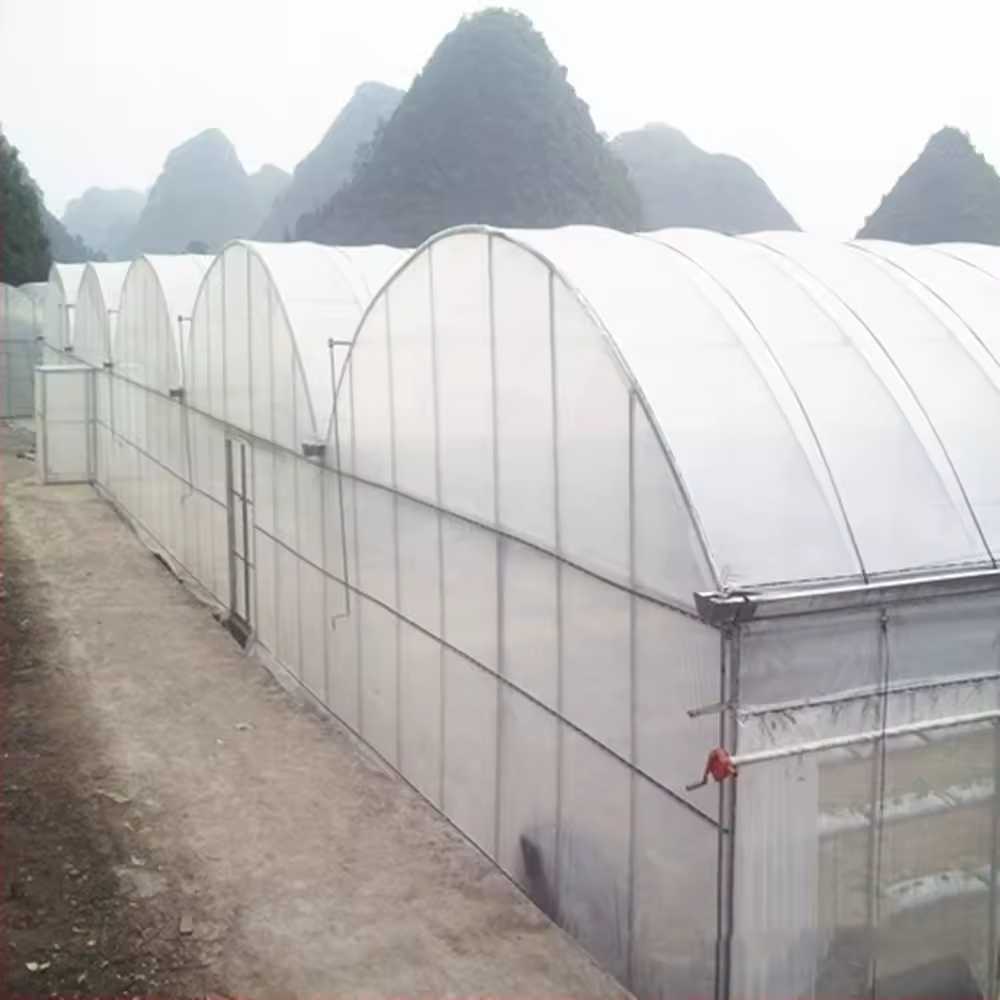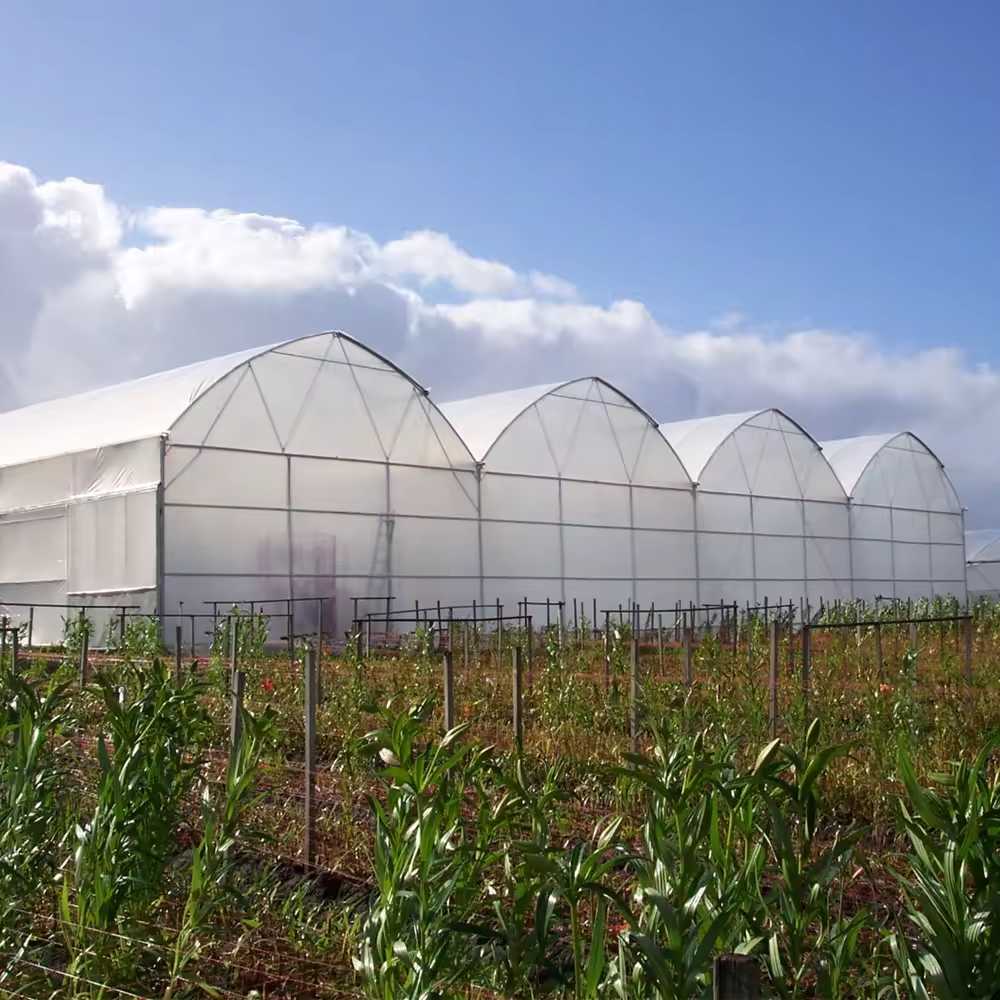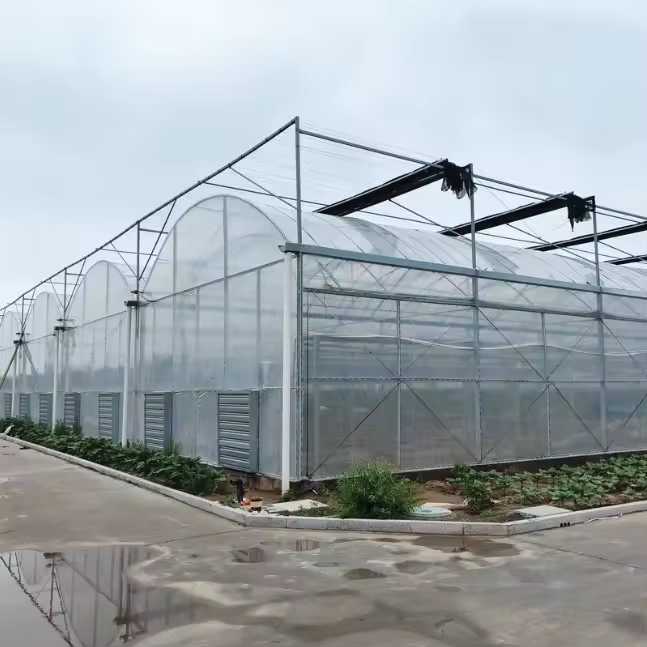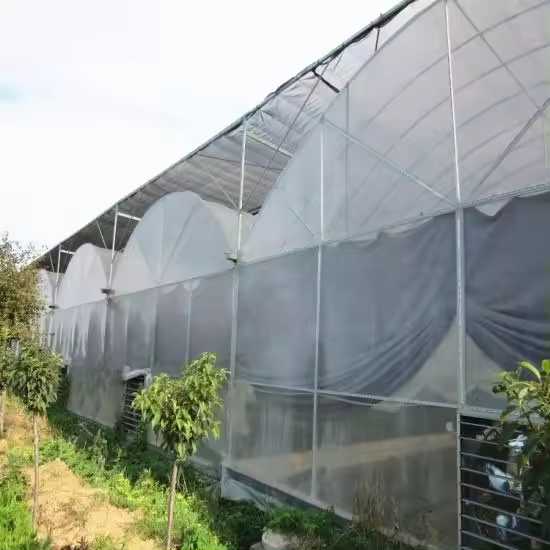
Introdução ao produto
Plastic film greenhouse is a type of greenhouse structure that uses a layer of plastic film (typically polyethylene) as the primary covering material instead of glass or polycarbonate. These greenhouses are popular because they are relatively cost-effective and provide excellent insulation for plants. The plastic film is typically stretched over a frame made of metal, wood, or PVC, and it creates a controlled environment for growing plants, extending the growing season and improving crop yield.
Features of Plastic Film Greenhouses:
Affordable: Plastic film is much cheaper than glass or polycarbonate materials, making plastic film greenhouses a more budget-friendly option for small and medium-scale farmers.
Light Transmission: Plastic allows sunlight to pass through, providing essential light for photosynthesis. Polyethylene film, the most common material, typically has good light diffusion, which helps prevent hotspots and ensures even light distribution inside the greenhouse.
Temperature Control: The plastic film provides insulation, maintaining warmer temperatures during cooler months, and protecting plants from excessive heat during hot weather by diffusing sunlight.
UV Protection: Most plastic films are treated with UV inhibitors to prevent degradation from sun exposure, ensuring longer life and stability.
Flexibility: The plastic film is lightweight and can be easily replaced or repaired. It’s also more flexible in terms of structural design compared to glass.
Ventilação: Proper ventilation (either manual or automatic) is important in plastic film greenhouses to prevent excessive humidity and heat buildup. Ventilation systems such as sidewalls or roof vents are often integrated into the design.
Durability: While plastic film greenhouses are generally less durable than glass greenhouses, they can last for several years (usually 4-6 years) before needing replacement, depending on environmental conditions and the quality of the plastic film used.
Plastic film greenhouses are widely used for growing vegetables, flowers, and herbs, as well as in hydroponic and aquaponic systems. They offer a balance between performance, cost, and ease of use, making them an attractive option for farmers in many climates.

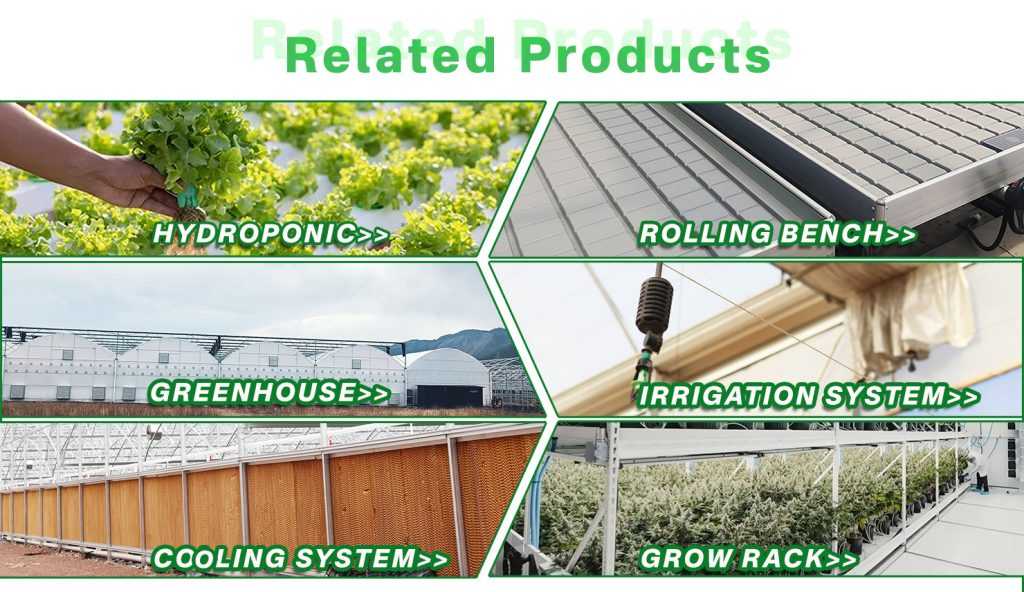
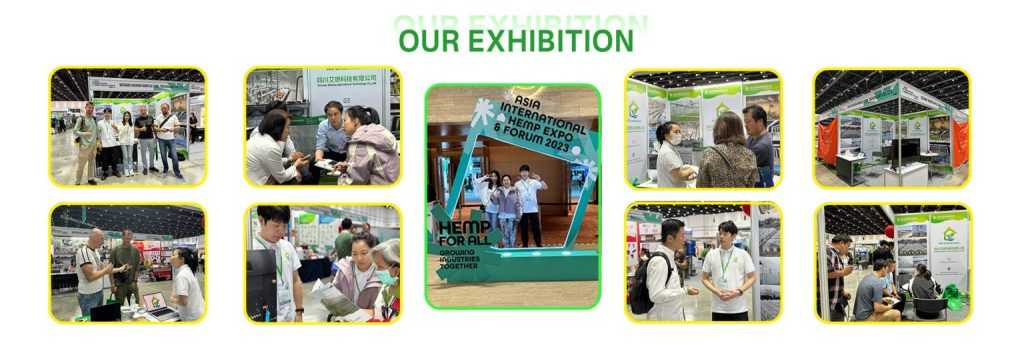
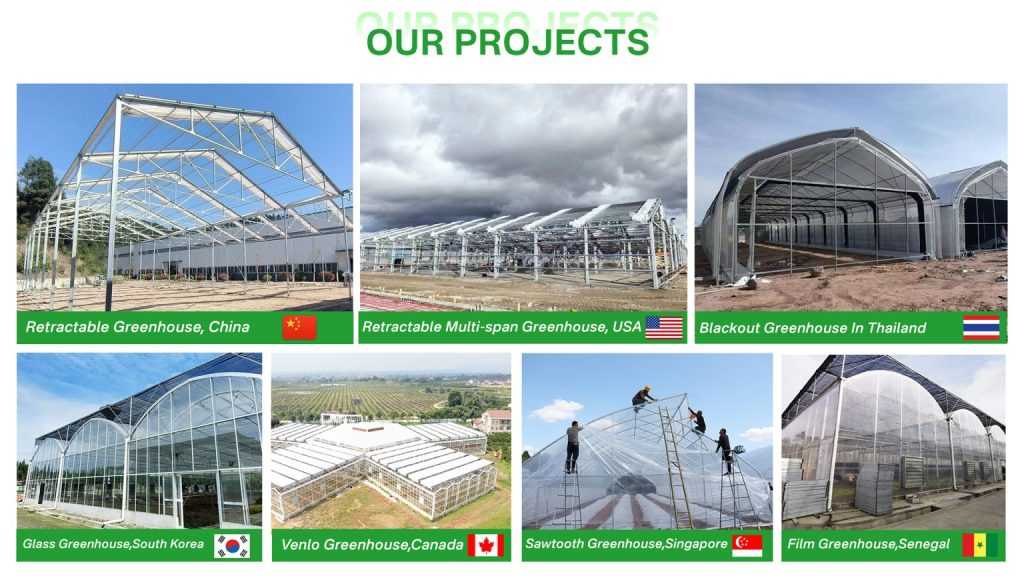
1. Você é da fábrica?
Sim, somos fabricantes de tipos de estufa há 15 anos.
Com uma equipa de engenheiros profissionais para um design de estufa adequado, serviço pós-venda completo e venda direta da fábrica para si agora!
2. como garantir a qualidade dos produtos?
A.Somos um fornecedor de ouro do alibaba e estamos envolvidos na exportação há 10 anos, os produtos foram exportados para mais de 40 países e
tem boa reputação no mercado mundial. A cooperação a longo prazo e com benefícios mútuos é a nossa filosofia de gestão.
B. Para confirmar que cada lote de produtos está em boas condições, o nosso departamento de inspeção examinará e testará os produtos minuciosamente e
cuidadosamente antes da entrega. Os testes e certificações necessários podem ser obtidos a pedido do cliente.
3. e quanto à embalagem e expedição?
A. As mercadorias são marcadas de acordo com o seu nome e partes, acessórios em caixas de cartão, tubos por feixe, todas as mercadorias são carregadas no
contentor diretamente (sugerimos que compre um contentor inteiro para que possamos arrastar o contentor para a nossa fábrica e carregar bem todas as mercadorias).
B. O porto de embarque é geralmente Qingdao / Xangai, podemos organizar o transporte para você depois de receber sua compensação.
4. existe alguma instrução ou manual de instalação?
A. Sim, o manual em inglês com desenho e vídeo é enviado juntamente com os produtos para orientar facilmente a sua instalação.
Está disponível uma instalação de orientação B.Engineer no estrangeiro.
C. O seu trabalhador ou engenheiro é bem-vindo à nossa fábrica para aprender a instalação da estufa.

